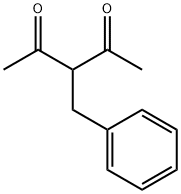5,5-DIMETHYL-2-(2,3,4,9-TETRAHYDRO-3,3-DIMETHYL-1OXO-1H-XANTHEN-9-YL)-1,3-CYCLOHEXANEDIONE
Synonym(s):5,5-Dimethyl-2-(2,3,4,9-tetrahydro--3,3-dimethyl-1oxo-1H-xanthen-9-yl)-1,3-cyclohexane-dione;5,5-Mmethyl-2-(2,3,4,9-tetrahydro-3,3-dimethyl-1-oxo-1H-xanthen-9-yl)-1,3 cyclohexanedione;9-(4,4-Dimethyl-2,6-dioxocyclohexyl)-1,2,3,4-tetrahydro-3,3-dimethyl-1-xanthenone;L152804;L-152804
- CAS NO.:6508-43-6
- Empirical Formula: C23H26O4
- Molecular Weight: 366.45
- MDL number: MFCD00184132
- SAFETY DATA SHEET (SDS)
- Update Date: 2024-11-19 23:02:33

What is 5,5-DIMETHYL-2-(2,3,4,9-TETRAHYDRO-3,3-DIMETHYL-1OXO-1H-XANTHEN-9-YL)-1,3-CYCLOHEXANEDIONE?
The Uses of 5,5-DIMETHYL-2-(2,3,4,9-TETRAHYDRO-3,3-DIMETHYL-1OXO-1H-XANTHEN-9-YL)-1,3-CYCLOHEXANEDIONE
L-152,804 is a potent and orally available Y5 antagonist, which is the receptor postulated to be responsible for hypothalamic "feeding".
What are the applications of Application
L-152,804 is a potent, selective non-peptide NPY5-R receptor antagonist
Definition
ChEBI: 2-(3,3-dimethyl-1-oxo-4,9-dihydro-2H-xanthen-9-yl)-5,5-dimethylcyclohexane-1,3-dione is a member of xanthenes.
Biological Activity
Potent, selective non-peptide neuropeptide Y Y 5 receptor antagonist (K i = 26 nM for hY 5 ). Displays > 300-fold selectivity over hY 1 , hY 2 , and hY 4 receptors. Causes weight loss in diet-induced obese mice by modulating food intake and energy expenditure. Centrally active upon oral administration in vivo .
storage
Desiccate at +4°C
Properties of 5,5-DIMETHYL-2-(2,3,4,9-TETRAHYDRO-3,3-DIMETHYL-1OXO-1H-XANTHEN-9-YL)-1,3-CYCLOHEXANEDIONE
| Melting point: | 207-208 °C |
| Boiling point: | 513.7±50.0 °C(Predicted) |
| Density | 1.20±0.1 g/cm3(Predicted) |
| storage temp. | Desiccate at +4°C |
| solubility | DMSO: soluble5mg/mL, clear (warmed) |
| form | powder |
| pka | 4.86±0.42(Predicted) |
| color | white to beige |
Safety information for 5,5-DIMETHYL-2-(2,3,4,9-TETRAHYDRO-3,3-DIMETHYL-1OXO-1H-XANTHEN-9-YL)-1,3-CYCLOHEXANEDIONE
| Signal word | Danger |
| Pictogram(s) |
 Skull and Crossbones Acute Toxicity GHS06  Environment GHS09 |
| GHS Hazard Statements |
H301:Acute toxicity,oral H410:Hazardous to the aquatic environment, long-term hazard |
| Precautionary Statement Codes |
P273:Avoid release to the environment. P301+P310:IF SWALLOWED: Immediately call a POISON CENTER or doctor/physician. P501:Dispose of contents/container to..… |
Computed Descriptors for 5,5-DIMETHYL-2-(2,3,4,9-TETRAHYDRO-3,3-DIMETHYL-1OXO-1H-XANTHEN-9-YL)-1,3-CYCLOHEXANEDIONE
New Products
Tert-butyl bis(2-chloroethyl)carbamate (S)-3-Aminobutanenitrile hydrochloride N-Boc-D-alaninol N-BOC-D/L-ALANINOL N-octanoyl benzotriazole 3,4-Dibenzyloxybenzaldehyde 4-Hydrazinobenzoic acid 1,1’-CARBONYLDIIMIDAZOLE R-2-BENZYLOXY PROPIONIC ACID 3-NITRO-2-METHYL ANILINE 4-IODO BENZOIC ACID 4-HYDROXY BENZYL ALCOHOL 4-(3-chloropropyl)morpholine phenylhydrazine hydrochloride (2-Hydroxyphenyl)acetonitrile 4-Bromopyrazole 5-BROMO-2CYANO PYRIDINE 5,6-Dimethoxyindanone 5-broMo-2-chloro-N-cyclopentylpyriMidin-4-aMine 4-methoxy-3,5-dinitropyridine 2-(Cyanocyclohexyl)acetic acid 2-aminopropyl benzoate hydrochloride 1-(4-(aminomethyl)benzyl)urea hydrochloride tert-butyl 4- (ureidomethyl)benzylcarbamateRelated products of tetrahydrofuran








You may like
-
 (9H-fluoren-9-yl)methyl (2,5-dioxopyrrolidin-1-yl) carbonate 82911-69-1 98.0%View Details
(9H-fluoren-9-yl)methyl (2,5-dioxopyrrolidin-1-yl) carbonate 82911-69-1 98.0%View Details
82911-69-1 -
 13057-17-5 95.0%View Details
13057-17-5 95.0%View Details
13057-17-5 -
![2-Nitro-8,9-dihydro-5H-benzo [7] annulen-7(6H)-one 98.0%](https://img.chemicalbook.in//Content/image/CP5.jpg) 2-Nitro-8,9-dihydro-5H-benzo [7] annulen-7(6H)-one 98.0%View Details
2-Nitro-8,9-dihydro-5H-benzo [7] annulen-7(6H)-one 98.0%View Details
740842-50-6 -
 4-bromoaniline 106-40-1 99.0%View Details
4-bromoaniline 106-40-1 99.0%View Details
106-40-1 -
 1421517-99-8 99.0%View Details
1421517-99-8 99.0%View Details
1421517-99-8 -
 5-bromo-2-chlorobenzoic acid 99.0%View Details
5-bromo-2-chlorobenzoic acid 99.0%View Details
21739-92-4 -
 2-methyl-5-nitrophenol 98.0%View Details
2-methyl-5-nitrophenol 98.0%View Details
5428-54-6 -
 15761-38-3 97.0%View Details
15761-38-3 97.0%View Details
15761-38-3
Statement: All products displayed on this website are only used for non medical purposes such as industrial applications or scientific research, and cannot be used for clinical diagnosis or treatment of humans or animals. They are not medicinal or edible.